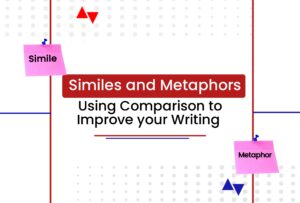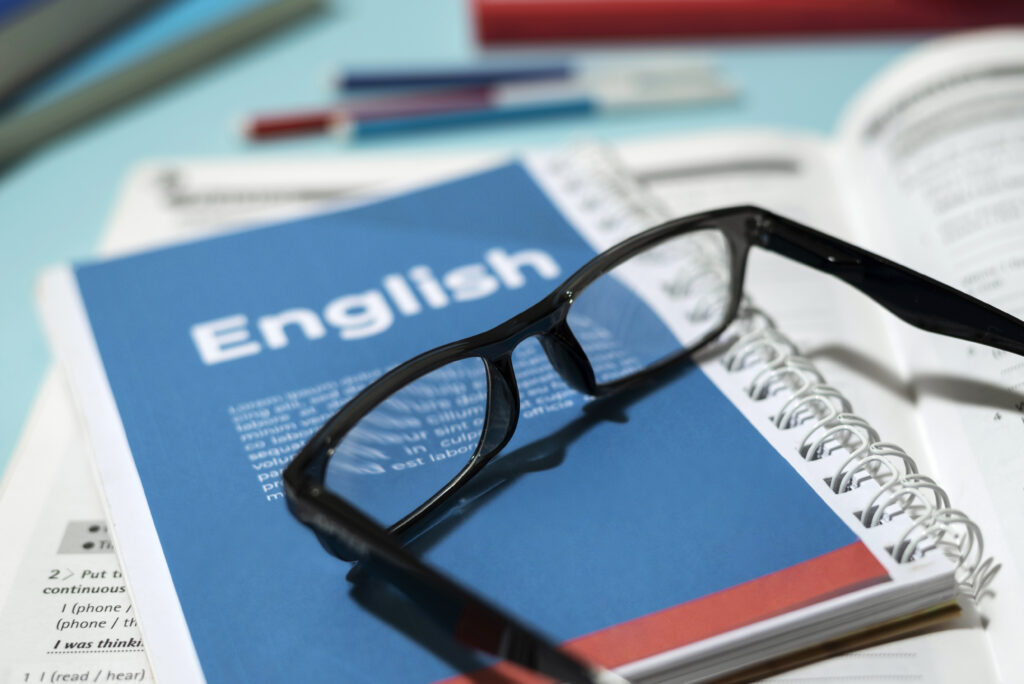Est. reading time: 4 minutes

As explained in our introductory article on figures of speech, figures of speech are expressions that convey a particular meaning or piece of information. Among the figures of speech, simile and metaphor are used to make comparisons. They are both used to comparing two things that are unlike each other. They promote better communication, vivid description writing, simplifying complex ideas, and imaginative writing.
Simile
The Merriam-Webster dictionary states, “A simile is a figure of speech comparing two unlike things, often introduced by like and as.” It shows the common quality between the objects or ideas being compared. It emphasizes a particular quality or characteristic in something or someone by comparing it with another thing or person.
Examples of similes used in sentences include:
- The baby’s laughter was like music to the man’s ears
- Bola’s heart is as hard as a stone.
- The rat ran as fast as a cheetah as it tried to escape the cat’s wrath.
- The couple fight like cats and dogs.
- “Okonkwo’s rise to fame was like a bushfire”. (Excerpt from Chinua Achebe’s Things Fall Apart).
- “My love for Linton is like the foliage in the woods: time will change it, I’m well aware, as winter changes the trees”. (Excerpt from Emily Brontë’s Wuthering Heights).
The example “the rat ran as fast as a cheetah as it tried to escape the cat’s wrath”, gives a more vivid description of how fast the rat ran. In the example, “My love for Linton is like the foliage in the woods,” the speaker compares her love for Linton to foliage, implying that her love for him would also die as the foliage dies in winter.
Types Of Simile
There are two main types of similes. These are the Traditional Rhetoric and the Epic or Homeric simile.
1. Traditional Rhetorical Simile
This consists of the basic types of similes we use. It involves using a simple pattern of descriptive words, followed by as or like and ending with a noun. For example;
- As stubborn as a goat.
- Meek as a lamb.
2. Epic or Homeric simile
This type of simile is more complex than the traditional rhetorical simile. It is more detailed than the Traditional rhetorical simile and tends to stretch to a longer text or paragraph. For example;
- “As when the shudder of the west wind suddenly rising scatters across the water and the water darkens beneath it, so darkening were settled the ranks of Achaians and Trojans in the plain.” (Excerpt from Homer’s Iliad.)
Metaphor
According to the Merriam-Webster dictionary, “a metaphor is a figure of speech in which a word or phrase denoting one kind of object or idea is used in place of another to suggest a likeness or analogy between them”. It makes implied comparisons between two objects without using the words like and as. Metaphors give vivid descriptions to creative writings.
Examples of metaphors include:
- Mr Okoro’s son is a goat.
- The baby’s laughter was music to the family’s ears.
- The family was an open book before the judge.
- “But, soft! What light through the window breaks? It is the east, and Juliet is the sun” (Excerpt from William Shakespeare’s Romeo and Juliet).
- “All the world’s a stage and all the men and women are merely players.” (Excerpt from William Shakespeare’s As You Like It).
- “Life’s but a walking shadow.” (Excerpt from William Shakespeare’s Macbeth).
Types Of Metaphor
There are several types of metaphors. Some of these include implied metaphor, mixed metaphor, visual metaphor, extended metaphor, and dead metaphor.
1. Implied Metaphor
This metaphor implies a comparison without directly comparing the two objects or concepts. For example;
- They roared with laughter. (This sentence compares the laughter of a group of people to a lion roaring).
2. Mixed Metaphor
This metaphor involves the mixture or combination of two or more, unlike other metaphors. For example;
- “It was the best of times, it was the worst of times, it was the age of wisdom, it was the age of foolishness.” (Excerpt from Charles Dickens’s A Tale Of Two Cities).
The excerpt above uses mixed metaphors to compare and contrast the conditions of the time.
3. Visual Metaphor
This metaphor compares two visual images. For example;
- The class was a zoo. (This example compares the image of a classroom to that of a zoo).
4. Extended Metaphor
This metaphor involves using metaphor or comparison over a paragraph or throughout a text or poem. An example of this is William Shakespeare’s Sonnet 18.
5. Dead Metaphor
This includes metaphors whose meanings have been overused to the point of becoming cliches or less clear. For example;
- Heart of gold.
Difference Between Simile and Metaphor
The main difference between the two is found in the use of as and like to make comparisons. A simile makes use of these words, while a metaphor makes comparisons without these two words. Similes and metaphors differ in that the simile makes a direct comparison between two concepts or objects, while the metaphor makes implied comparisons.
Conclusion
The use of similes and metaphors in oral and written communication can be instrumental in adding more vivid imagery to descriptions and can spice up writing. I hope this article has helped your understanding of similes and metaphors. Check back for other articles on figures of speech on our blog.

